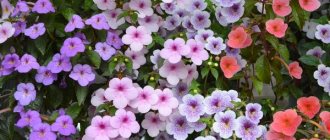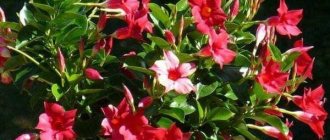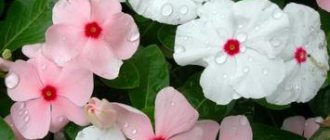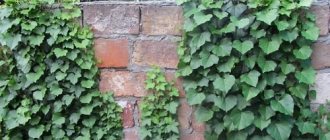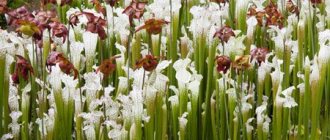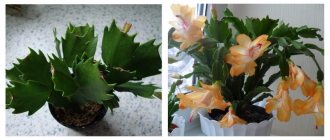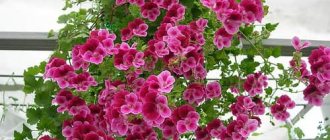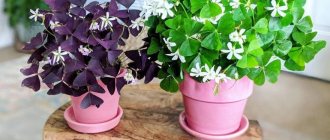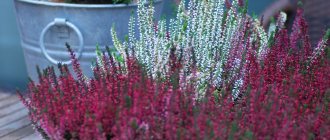Syngonium is a plant that came to us from America, some call it a liana, it comes from the Aroid family, perennial. It received the name liana due to the long branches that spread along the ground or can climb and wrap around supports.
Syngonium is densely covered with large, bright green leaves. It is precisely for its bright greenery that flower growers like it so much. Syngonium will add oxygen, add a tropical touch to the decor of the apartment, and diversify with its bright foliage.
Houseplant syngonium - description, photo
If you want to know what syngonium looks like , then you can recognize a climbing herbaceous plant by the following signs:
Bright green flexible stems one and a half to two meters long. They can cling to support using aerial roots or simply creep along the ground. The thickness of the shoots is 1-2 cm. In nature, the flower has a stem thickness of up to 6 cm, and its length can be up to 20 meters.
The petioled leaves are monochromatic or variegated in color and have an elegant shape. The palmate or heart-shaped leaf blades have a velvety or leathery shiny surface. They have raised veins. Against the background of light green or almost white leaves there are silver or even lighter green stains, strokes, and strokes.
The flowers consist of a red or pink spathe bract and a green spadix. At home, syngonium blooms very rarely.
The fruits on the plant can only be seen in nature. They are ovoid or cylindrical berries up to one centimeter long. They give off a scent that attracts animals.
Under favorable conditions and good care, the shoots of the syngonium indoor plant grow by 30 centimeters within a year.
Diseases and pests
Syngonium is little susceptible to pest damage, but if you purchase an already infected vine, harmful insects quickly spread throughout all indoor plants.
It is necessary to treat the plant with a solution with insecticidal properties if there are first signs of damage to the syngonium by such pests:
- spider mite;
- aphids;
- mealybug;
- scale insect.
The following preparations are suitable for spraying:
| Fitoverm; | Aktara; | Actellik. |
Among diseases, syngonium is most often affected by the following ailments:
- powdery mildew;
- gray rot;
- late blight
When signs of these diseases appear, the syngonium must be treated with a fungicide solution.
After treatments, it is recommended to replant the plant in new soil, and cut off and destroy all affected leaf blades.
Photos, varieties and types of syngonium for growing at home
Of all the types of elegant and unpretentious plants that grow in nature, only three are grown at home. Based on them, various beautiful varieties were created.
Syngonium peduncle
The heat-loving branched vine is distinguished by thin, branching stems, large arrow-shaped dark green leaves on a long petiole and an annual growth of 40 to 60 cm. In nature, the plant is found in Central America. It was from it that breeders bred many different varieties of syngonium, each of which has its own original, beautiful color of leaf blades.
Wendland syngonium
Root-climbing vine has excellent decorative qualities. On its petioles up to 30 cm long, velvety dark green leaves are formed, along the center of which there is a silver stripe. This species of syngonium is native to Costa Rica.
Syngonium aurate or auricular
The difference between Syngonium auricularis and other species is that at the base of their petioles there are two segmental processes that resemble ears. The plant grows quickly and can grow up to 90 cm in a year. With good care, an adult vine grows to almost two meters in height. On its shoots up to 2.5 cm thick, aerial roots are located in the internodes. The stems are strewn with green, shiny, five- or three-fold dissected leaves. On a young plant, the leaf blades are arrow-shaped.
You will be interested to know: Hamedorrhea: home care, photos, transplantation, palm diseases
Based on these types of syngonium, the following varieties were bred:
Panda - the variety got its name from the dark green matte leaves on which there are yellowish spots. The plant bushes and grows quickly.
Syngonium Pixie is a compact perennial plant with leaves in the form of a heart-shaped ellipse. The glossy leaf blades have variegated colors - light green veins are located on a light green background.
Butterfly is one of the most popular syngonium varieties that is grown at home. On its shoots up to one and a half meters high there are spear-shaped, large, green leaves with light veins.
Syngonium Arrow - this variety is distinguished by beautiful variegated leaves, which are decorated with a variegated pattern along the veins.
Neon Pink (pink) is an unusual variety that is distinguished by the pink color of its leaves. When the leaves first appear, they are bright pink. After some time they turn pale and green, however, the veins remain pink.
Syngonium Brocanth is a plant with brown leaf blades, the veins of which have a red tint.
Rasami Nag - a variety up to 40 cm high, has a bush form, and its shoots almost do not weave. The almost white leaves are decorated with pink veins.
Types of syngonium with photos and names
Syngonium wendlandii
This species is a liana. Small, velvety, dark green leaf blades have central veins that are sometimes silvery.
Syngonium podophyllum
This vine is decorated with dark green leaf blades. Young foliage looks like an arrowhead, and adult foliage looks like a sling. The middle part of the leaf plate reaches up to 30 centimeters in length, and up to 10 centimeters in width.
Caring for syngonium at home
Caring for this type of vine is a pleasure, since the indoor plant is very unpretentious.
How to care for syngonium?
Lighting. The flower loves diffused light, so it can be placed on western, eastern window sills or even in the back of a bright room opposite the window. However, in winter the plant will need to be placed closer to the window, as it needs more light at this time of year. The vine will also grow in the shade, but in this case the leaves may lose their decorative color and become small. Varieties with colored, variegated leaves require more lighting.
Air temperature . Syngonium grows well indoors. The most comfortable temperature for him is about +22 degrees. In the winter season, it is necessary to ensure that the room temperature does not fall below +16 degrees, and the flower does not stand in a draft.
Watering . When caring for syngonium, it is recommended to carry out regular, but not frequent watering. It should be watered only when about two centimeters of the top layer of the substrate has dried (if the plant is an adult). Young plants planted in small pots are watered after the top layer of the substrate has dried. But in any case, you need to know that it is better to underfill syngonium than to overfill it . At home, this flower will easily tolerate if you delay watering for a couple of days than if the soil is constantly damp. In this case, its roots and stems will begin to rot. The syngonium should be watered generously with water at room temperature, which should sit for 24 hours. Adult specimens are watered approximately once every 7-10 days. It all depends on the air temperature in the room.
Air humidity . Unlike many decorative foliage plants, syngonium is not very demanding on air humidity. However, if the room is hot, the leaves should be sprayed daily and washed regularly with a soft cloth or sponge. While the vine has not yet grown much, it is recommended to wash it from time to time in a warm shower, having first wrapped the pot in cellophane so that water does not get into the ground. In winter, it is better to move the indoor plant away from heating radiators or cover the radiators. Otherwise, syngonium leaves may begin to dry out. You can increase the air humidity around the flower using a tray with damp moss or expanded clay. The pot is placed on it so that the water does not reach the drainage holes.
You will be interested to know: 7 reasons why the leaves of a dollar tree turn yellow, what to do and how to save zamioculcas
Syngonium fertilizer . Care necessarily includes feeding the indoor plant, which is done from April to September. Fertilizers are applied every two weeks. For this purpose, you can use mineral fertilizers intended for decorative deciduous plants. In the winter season, the flower does not need feeding.
Bush formation .
You should think about the formation of the plant when planting it. If you want to get it in the form of a tree, then several seedlings are planted in one pot, between which a moss support is installed. The vine will look beautiful if its shoots are attached to a bamboo lattice installed in a pot. As they grow, the stems will need to be tied to a support. In order for the plant to produce more shoots and bush, each young stem is pinched above the sixth leaf. In this case, the flower will grow in the form of a bush. Unsightly and poor-quality shoots can simply be cut off.
Rules of care
Caring for syngonium at home is not difficult. Therefore, in many offices and apartments you can find various varieties of this vine.
Lighting
Syngonium, growing in its homeland in the shade of tropical trees, does not like direct sunlight. Therefore, it is better to place it on a western or eastern window. On the south side, the vine is placed away from the window. In the autumn-winter period, when plants lack light, it is recommended to place the pot closer to the light or organize additional lighting. Otherwise, the leaves begin to turn pale, and variegated leaves lose color.
Temperature
Syngonium is well adapted to indoor conditions. In summer, it feels comfortable in a temperature range of 20 to 25 degrees. In winter, it is advisable to maintain it at a temperature of 18 to 20 degrees. Liana can survive a drop in air temperature of up to ten degrees, but only for a short time. It should be noted that in winter it is necessary to protect the syngonium from the effects of dry air from heating devices and radiators. They also protect the plant from drafts, otherwise the plant weakens and is susceptible to disease.
Watering and moistening
Syngonium, as a resident of the tropics, is accustomed to humidity. Therefore, it is often and abundantly watered as the top layer of soil dries. The water should be settled, soft and at room temperature. After watering, the remaining water is poured out of the pan.
In summer, the vine needs additional moisture by spraying with settled or boiled water at room temperature. In hot weather, it is advisable to spray daily. In summer, you can additionally give the plant a shower, but only with boiled water. It is also recommended to place containers of water next to the plant or place the pot on wet expanded clay. But at the same time, the pot should not stand in the water or touch it, otherwise the roots will rot.
In winter, showers are replaced by wet wiping of leaves. And watering is carried out less frequently - two to three days after the top layer has dried. If a plant lacks moisture, the tips of its leaves begin to dry out and “rusty” spots appear. If over-watered, the leaves become dull. Increased air humidity in the room is manifested by droplets of moisture at the tips of the leaves.
Soil and fertilizing
The soil for the syngonium is prepared loose and breathable. You can buy a ready-made earthen mixture for Aroids. It is advisable to add coconut fiber to it in a small amount to give it looseness. It’s easy to prepare the mixture yourself. To do this you need to take the following ingredients in equal parts:
- leaf soil;
- turf land;
- peat;
- sand.
This may be interesting: Arrowroot - types and varieties of prayer plants
In spring and summer, decorative deciduous indoor plants are fertilized with mineral fertilizers.
Note! It is necessary to take fertilizer with a small amount of calcium.
Fertilizing is done twice a month. In winter there is no need to feed syngonium. But if in winter the leaves of syngonium begin to turn yellow, then you can carry out a one-time fertilizing to replenish nutrients.
Transfer
In the spring, the vine is transplanted into a larger pot. Young plants need to be replanted every year, and adults - once every two to three years. If the roots are peeking out of the holes in the bottom of the pot, then the plant needs to be replanted. When planting, a good layer of drainage is poured onto the bottom. An adult plant is transplanted using the transshipment method, leaving soil on the roots.
If it is assumed that the plant will grow vertically, then when replanting, first place a support and strengthen it with expanded clay, a layer of earth, and then plant the plant. When replanting, dried leaves and shoots are removed, and decorative rejuvenation of the bush is carried out.
Syngonium transplantation
When caring for syngonium at home, young specimens should be transplanted into a new pot annually, and adult plants after roots appear from the drainage holes. For replanting, pots two to three centimeters larger than the previous ones are used. The soil mixture can be purchased at the store or prepared independently from the following components:
- sand;
- peat;
- leaf soil;
- turf land.
Everything is taken in equal parts and mixed. The result should be breathable, loose, permeable soil with a slightly acidic or neutral reaction.
Transplant process:
- The bottom of the new pot is filled first with drainage and then with a small layer of prepared soil mixture.
- Watered the day before planting, the plant is carefully removed from the old pot and placed in a new one. In order not to disturb the roots, they are taken out along with a lump of earth. If the vine is tall and attached to a support, then you will need to carefully transfer everything together to a new pot.
- If you are replanting a still young but actively growing vine, then during replanting you will need to install a moss support, bamboo sticks or trellises.
- The roots are covered with new substrate and watered.
- When the soil settles after watering, you will need to add more soil.
After transplanting into nutrient soil, the plant does not require feeding for three weeks.
Landing
Episcia - home care, propagation by leaves and cuttings
As soon as roots appear on the shoots, the plant is ready for planting. To do this, be sure to take a pot with holes and a layer of drainage.
For your information! How to root syngonium to get a voluminous bush - several cuttings should be planted in one pot.
For decoration, you can install a support immediately during planting
It is located in the center directly into the drainage, and the growing shoots weave around it in a circle. The soil for rooting syngonium needs to be light and loose. Equal parts of peat and sand work well. Replanting into a regular soil mixture can be done in the spring, but it is important not to forget to feed it.
Reproduction of syngonium - photo
It is very easy to propagate a vine at home. Even a novice gardener can cope with this. To propagate syngonium, you can use apical cuttings
or stem shoots, which you can see in the photo.
Cuttings must have at least two buds.
Both shoots and cuttings are cut using pruning shears
and placed in a jar or container with water at room temperature.
After about three weeks, roots should appear.
When they grow up, the cuttings are planted in a pot with syngonium soil. The volume of the pot for planting depends on how many petioles you will plant in it and on the volume of their roots. Plants cannot be planted immediately into a large container. The volume of the pot should be only 2-3 cm larger than the total volume of the roots.
You will be interested to know: Caring for arrowroot at home, photo and flower propagation
The seedlings are planted in a pot and watered. For better rooting, you can put a transparent bag over them for the first time. In this case, the plants will need to be ventilated every day and the soil moisture checked. When the cuttings take root, remove the bag.
While roots are forming on the cuttings placed in a container with water, the jar can be placed in a beautiful pot and placed on a windowsill, shelf or aquarium, which will be decorated with beautiful syngonium leaves.
How does it reproduce
Gardeners cultivating syngonium know that flower propagation is possible in two ways:
- When cutting, shoots up to 15 centimeters long are cut off from the tops or stems, leaving several internodes with aerial roots. To propagate a cutting to form full-fledged roots, you need to place it in a glass of warm, settled water in which a crushed tablet of activated carbon is mixed. The second option is planting in soil made from a sand-peat mixture and moss. In this case, the shoot must be covered with cling film to achieve a greenhouse effect. The dome is removed after complete rooting. On an ongoing basis, the shoots are transplanted into a container one or several pieces at a time, if necessary with an installed support to form a crown.
- Reproduction by stem is carried out according to a similar scheme. A vine from a pot with the main plant is placed in a prepared container with soil. The segment with aerial roots is buried in soil and fixed. Watering and fertilizing are carried out according to the standard scheme. On average, after ten days, the rooted shoot is cut off from the mother stem.
Note! Syngonium is afraid of drafts and long stays in the cold. At temperatures below 15 degrees the plant dies. It is especially necessary to carefully monitor the climate when there are young rooting shoots in the house or the vines have recently been transplanted into fresh soil.
Aerial roots can be rooted into new soil
Pests and diseases of Syngonium
The liana is quite resistant to pests and diseases. However, errors in care and unfavorable conditions for its cultivation can lead to the appearance of harmful insects and loss of decorativeness of the leaves.
Among the pests that can settle on a flower are scale insects, thrips, aphids, and spider mites, which feed on the sap of the plant. If the leaves on the syngonium turn yellow , dry out and fall off, and the vine itself has slowed down, you need to carefully examine the leaves and shoots. What to do if pests are found? You can get rid of them with the help of special insecticidal preparations - Decisa, Aktellika, Fitoverma. Insecticides should be used according to instructions.
Why do syngonium leaves dry out?
The tips of the leaves may darken and dry out due to dry air in the house. Spray the vine more often, move it away from working batteries or place it on a tray with wet expanded clay.
Spots on Syngonium leaves
There may be several reasons:
- If the plant is on a southern windowsill, then brown spots may appear on its leaves from direct sunlight. The flower should be moved to another place.
- Due to waterlogging of the soil and overcooling of the roots, spots may also appear on the leaves of syngonium (see photo). Review the care or remove the flower away from drafts.
Why do syngonium leaves turn yellow - what to do?
First of all, you need to find out the cause of the problem:
- The plant is affected by insects, which must be gotten rid of using the methods described above.
- If the leaves not only turn yellow, but also become small, it means the flower lacks nutrients. It should be fed or transplanted into new soil (if an adult plant grows in one pot for a long time).
- Leaves may turn yellow and wither due to abundant and frequent watering. The top layer of soil must dry out before the next watering. Water should always be drained from the tray.
Leaves fade and lose their decorative effect
Most likely, the plant does not have enough light. In this case, the multi-colored leaves will become simply green, dull and small, and the shoots will begin to stretch.
Pests
Any disease leads to a rapid loss of flower decorativeness.
Aphid
Aphids settle on the lower surface of leaves and on the tops of shoots. From a small area it can be removed with cotton wool and soap. If the entire plant is affected, it is sprayed with an insecticide.
Shchitovka
The life activity of the scale insect causes the leaves to dry out and the growth of the vine completely stops. The danger lies in the damage to the trunk: if its base dries out, the entire plant will die.
If the syngonium is already infested with pests, it is wiped with soapy water and then washed in the shower. The remaining scale insects are destroyed by spraying with an insecticide.
Trips
Dry air is the main provocateur of thrips . Light spots form on the leaves, then they turn brown and a surface sheen appears. Insecticides “Intavir” and “Fitoverm” are suitable to combat them.
Spider mite
Spider mites also appear when there is insufficient spraying. A thin web becomes visible in the axils, and the leaves dry out and fall off. The problem is solved by treating with an insecticide and increasing humidity.
Is it possible to keep syngonium at home?
According to some folk signs and superstitions, vines are muzhegons, so they cannot be kept in the house. Since syngonium is a vine, it is supposedly undesirable to grow it in an apartment or house. It’s up to everyone to believe such superstitions or not, but is a beautiful, graceful flower really capable of driving a loving husband out of the house?
At the same time, other folk signs about syngonium indicate that this plant can help its owner fight diseases. In addition, the plant has a positive effect on mental activity, energizes you with optimism and makes you think positively.
Syngonium is recommended to be grown in apartments, since its leaves filter indoor air, thereby eliminating exposure to hazardous substances. The flower stabilizes the oxygen saturation and humidity level in the air in the home. In addition to these useful qualities, using syngonium you can decorate any room, kitchen and even bathroom. It is unpretentious in care, so even a novice gardener can grow it.
Is it possible to keep Syngonium at home: signs and superstitions about the poisonousness of the plant?
Syngonium is a poisonous plant, like all representatives of the Araceae family. Its milky juice, if it gets on the skin or mucous membranes, can cause severe irritation, and if ingested, lead to poisoning. When working with a flower (transplanting, dividing), it is necessary to use personal protective equipment - rubber gloves. Syngonium can be kept at home, but it is better to choose a place for the flower that is inaccessible to children and animals - high chests of drawers, shelves, hanging flower pots.
Over the entire period of cultivation of the species, it acquired a considerable number of signs and superstitions. Syngonium has a “good” and a “bad” side. Since the liana comes from tropical forests, it reacts to high air humidity by forming small droplets of water at the tips of the leaves. Because of this specific feature, syngonium is called a “weather forecaster”; as soon as drops form on the leaf blades, we can confidently say that rain is approaching. However, the same reaction of the plant indicates excess moisture in the soil.
In the past, syngonium, like all types of lianas, was considered a “husband,” but over time this belief was not confirmed; in fact, such a “negative trait” is just a common prejudice.
According to the ancient Chinese teachings of Feng Shui, the sharp ends of a room, objects, including plants, have a negative, poisonous effect on human life. According to Feng Shui, the sharp ends of the arrow-shaped leaves of syngonium emit “poisonous breath”. However, according to the rules of the teaching, the negative energy of the plant can be neutralized with the help of protective objects, amulets, and talismans located next to the flower pot.
Botanical description
Syngonium flowers are herbaceous climbing plants with thin stems on which aerial roots develop that cling to any support. The leaves of young syngoniums are whole, arrow-shaped, their color is much brighter than that of old ones, in which, moreover, the leaf plate over time becomes dissected into several segments - from 3 to 7. Florists are attracted not only by the graceful shape, but also by the color of the leaves of syngonium - plain or variegated, with silver strokes, strokes, stains. The background of the leaves is also varied - from bright green to almost white. Syngonium flowers, like all Araceae, have a green spadix with a pinkish or red bract in the form of a spathe, but syngonium does not bloom at home.
- Indoor trees: care, choice, features
The milky juice of syngonium is poisonous, like the juice of all Aroids; when it comes into contact with the mucous membrane, it causes irritation, so readers often ask whether syngonium can be kept at home. If you place the plant in the kitchen, in a place that is difficult for children and animals to reach, then there will be no trouble. You can keep the syngonium in an office or bedroom, the doors to which should always be closed.
Table: conditions necessary for syngonium
| Humidity | Temperature | Light | |
| Spring Summer | Syngonium prefers high air humidity. In summer, it is recommended to frequently spray the flower with warm water, and wipe the leaf blades with a damp cloth or sponge to prevent the appearance of pests. | The most comfortable temperature is +18–24 °C. | The plant is shade-tolerant and does not like direct sunlight; syngonium needs soft, diffused lighting. The best option for placing the flower would be an east-oriented window. It can also be placed inside the room, placed on a shelf or table. |
| Autumn winter | There is no need to spray the syngonium. It is enough to place it in a tray with wet expanded clay or peat if the flower is located near a heating radiator. | The temperature of the syngonium should be at least +17–18 °C, however, the plant can tolerate a short-term drop of up to 10 °C, but you should not expose the flower to hypothermia for too long. | Additional lighting is required in the morning and evening hours so that the shoots do not stretch too much and become brittle and brittle. |
Benefits and harms
Syngonium is not only an elegant decoration for your home, but also brings certain benefits. This plant fills the house with positive energy and makes the people living in it grow and change for the better.
The flower horoscope says that this type of vine is useful to have in the house for those people who are endowed with complexes. Liana awakens in people curiosity and a desire to expand their horizons, contributes to the formation of a strong character and self-confidence.
From a medical point of view, syngonium is not endowed with any special healing properties, but it was noticed that its presence in the house has a beneficial effect on the functioning of the digestive tract. The harm of this plant is that its juice is poisonous, but if you take the necessary precautions when handling it, then you have nothing to fear.
IMPORTANT! If syngonium juice gets on your skin, wash it off immediately with plenty of running water.
Photo
Next, see: syngonium photo of a flower with proper home care
Homeland of the plant
In nature, syngonium can be found in tropical forests located in the southern and central regions of America, as well as in Cuba and Jamaica. This liana is the closest relative of the philodendron.
Pay attention to other representatives of the Liana genus. For example, one of the most beloved home plants by many is Hoya Carnosa, a beautiful liana with decorative carved leaves is Raphidophora, as well as the evergreen Fatshedera liana.
Problems when growing syngonium
- Wet drops on the tips of the leaves indicate excess humidity in the room. This is not a cause for concern, and in this case the humidity does not need to be reduced.
- Dry brown spots on the tips of the foliage and subsequent leaf fall indicate too dry air.
- The leaves become smaller - the flower does not have enough lighting or needs to be fed. If the bush is variegated, in low light it loses the color of the foliage, and it becomes simply green.
- Brown spots appear all over the plant , which means that watering is excessive and, most likely, water is stagnating in the bowl. If at the same time the air in the room is quite cold, the plant stem may rot.
- Faded, yellowed leaves are a sign that the flower lacks nutrition. He needs to be fed.
